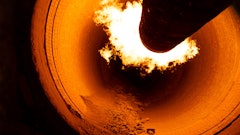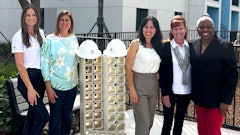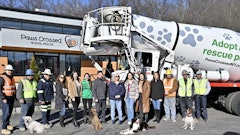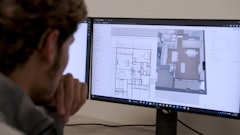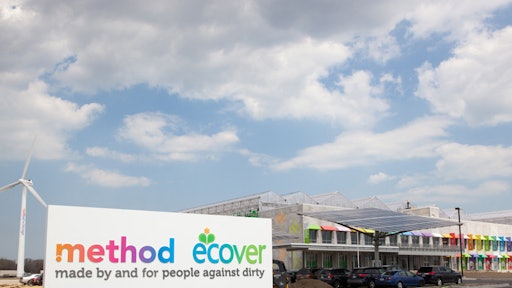
When you think of green commercial buildings, what springs to mind? Apartment towers with rooftop gardens? How about office buildings equipped with low-flow toilets and energy-efficient windows?
It’s true that office buildings and multifamily projects make up a large portion of the LEED-certified commercial properties across the country. But it’s easy to forget that industrial buildings — warehouses, distribution centers and factories — can also be green.
The number of industrial buildings that have achieved LEED certification status is steadily growing. According to the U.S. Green Building Council (USGBC), there are currently more than 1,755 LEED-certified industrial facilities worldwide totaling more than 496 million square feet and an additional 2,710 projects registered totaling nearly 737 million square feet.
Industrial facilities, which include manufacturing buildings, warehouses, distribution centers and industrial campuses, operate on a vastly larger scale than homes, office buildings or even a university campus. The manufacturing sector alone is responsible for 30% of the nation’s total energy consumption and uses an estimated 15,900 million gallons of water per day, which is roughly 4% of total daily water use. Through LEED certification, the world's most widely used green building rating program, industrial facilities are more resource efficient and high-performing, which translates to increased asset value and millions of dollars in savings for owners and operators.
This is no surprise to Karl Heitman, president and founder of Heitman Architects Incorporated in Itasca, IL. Heitman says that building green, and seeking LEED certification, is a smart financial move for the owners of industrial buildings. At the same time, green warehouses and manufacturing space makes good economic sense for the companies that lease or buy industrial space. As you drive down your environmental impact, you often find large cost savings. LEED can help both reduce the environmental impact and the cost associated with running a factory. When you consider the size and scale of industrial faculties and today’s business models, we are talking about millions of dollars in savings and conservation on a truly massive scale.
Green buildings consume less energy. For the owners and tenants of industrial facilities, this will result in lower operating costs each year. Green buildings are also healthier workplaces, Heitman says, resulting in healthier and more productive employees.
“There is a lot of potential when it comes to industrial facilities and green building,” Heitman says. “Green is a smart thing to do economically for industrial developers.”
Take the LEED
A 2016 survey, conducted by the USGBC and Dodge Data & Analytics, predicts that the global green building market will more than double by 2018. In the U.S., nearly half (44%) of the respondents to the study report that they are currently doing more than 30% of their projects green, and 58% report that they will be building green at that level by 2018.
That means the green building isn’t just a nice thing to do anymore. It’s an expectation and saying that becoming involved in LEED projects is too costly is no longer a viable excuse.
“The costs of going green have pretty much gone away,” Heitman says. “To get a baseline LEED-certified building today doesn’t involve nearly as many hard costs as it once did. To get to Silver, Gold or Platinum levels, yes, you are talking about some additional costs. But for baseline LEED projects, the buildings being designed today come with only minor increases in hard building costs.”
That doesn’t mean that there aren’t some additional costs to getting LEED certification. Owners will have to pay for the process itself of getting certified. That cost can range from $50,000 to $100,000, Heitman says.
However, green buildings are gaining popularity not for the soul reason of owners hanging a plaque on their door. In fact, branding/public relations and internal corporate commitment have seen notable drops in response between 2012 and the current 2015 study.
“Some developers really understand the value of green building,” Heitman says. “They understand that there is a corporate social responsibility for going green. But they also understand that building green gives them a benefit that they can pass onto their tenants. Their tenants are looking for greener solutions, so they are attracted to green buildings. That is a benefit to the owners and developers of industrial facilities.”
Heitman says that he expects to see even more green industrial facilities to pop up around the Chicago area in the coming months. Already, the bigger companies, the Fortune 500 firms, are routinely going green with their manufacturing and warehouse facilities, he says. The number of smaller companies pursuing green is also increasing, although at a slower pace, Heitman says.
“Once more tenants and companies start demanding it, the mass market will change,” Heitman says. “Most developers will follow the demand. If companies are demanding green, they will follow that demand.”
The Method Way of Sustainability
Today’s consumers increasingly want to purchase products that have come from green, sustainable manufacturing facilities, Heitman says. That’s another incentive for tenants to locate their businesses in green industrial properties. And it’s another incentive for owners who want to attract these tenants.
The Chicago area is home to many LEED-certified industrial projects. Heitman and his company, for instance, partnered with Summit DB and William McDonough + Partners on the Method Soap facility that began operating in Chicago’s Pullman neighborhood last year. Workers at this LEED-Platinum facility, the only LEED-Platinum manufacturing facility to date in this industry, manufactures and ship environmentally sustainable hand and dish soap.
During construction, local and recycled materials were used whenever possible and the company was able to reach their goal of sending zero material to landfill. The site is powered by a 230-ft-tall commercial-grade wind turbine. The site also has solar tracking trees in the parking lot, a solar water heating system, natural and energy-efficient lighting, as well as heat-reflective concrete and low-flow water fixtures throughout the building. Method says that by using a combination of conservation and renewable energy, they are on track to reduce their energy consumption by more than 50% at this facility alone.
To top it all off (literally), Method installed a 75,000 square foot greenhouse roof that is operated by urban agriculture company, Gotham Greens. The rooftop greenhouse is gearing up to produce 500 tons of fresh, pesticide-free produce annually, which is good news for the local community and nearby retailers and restaurants.
Method also houses both their manufacturing and bottling operations in one spot that serves as a distribution center for both Method and Ecover. Having everything in one building allows the company to reduce their carbon footprint. With this location, the company has also positioned themselves to source ingredients and distribute products efficiently across North America.
“That is an impressive facility, but it’s not just a philanthropic effort" Heitman says. "It was a businessman who put that plan together. The reason that facility works is because it makes business sense. It reduced the costs of the company’s supply chain. It relies on renewable energy sources, so it also reduces the operations costs.”
That facility has received plenty of press. But there are other LEED industrial facilities scattered across the Chicago area that have been just as important.
Heitman’s company worked with Clarius Partners on that company’s more than 1-million-square-foot warehouse in the company’s master-planned Clarius Park Joliet in the south Chicago suburb of Joliet. That building received LEED-Silver certification back in 2014.
Heitman Architects also worked with Peak Construction Corporation on a Sunstar facility in Schaumburg. This LEED-certified building features a 365-ft-long 22-ft-high glass wall that overlooks the facility’s manufacturing floor. This allows nature daylight to wash over the floor, providing a healthier environment for workers and lower operating costs for Sunstar.
Additional information for this article also provided by Dan Rafter, editor, Midwest Real Estate News.
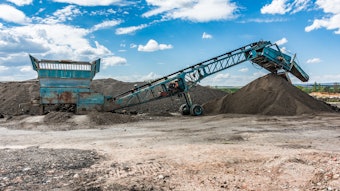
![Img 1707[56]](https://img.forconstructionpros.com/files/base/acbm/fcp/image/2023/04/IMG_1707_56_.6437076c97961.png?auto=format%2Ccompress&fit=crop&h=191&q=70&rect=0%2C462%2C1920%2C1080&w=340)










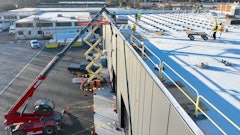
![Glp Porsche 072723 465 64ee42287c29e[1]](https://img.forconstructionpros.com/files/base/acbm/fcp/image/2024/03/GLP_PORSCHE_072723_465.64ee42287c29e_1_.65e88b8589b9c.png?auto=format%2Ccompress&fit=crop&h=135&q=70&rect=0%2C520%2C2250%2C1266&w=240)

